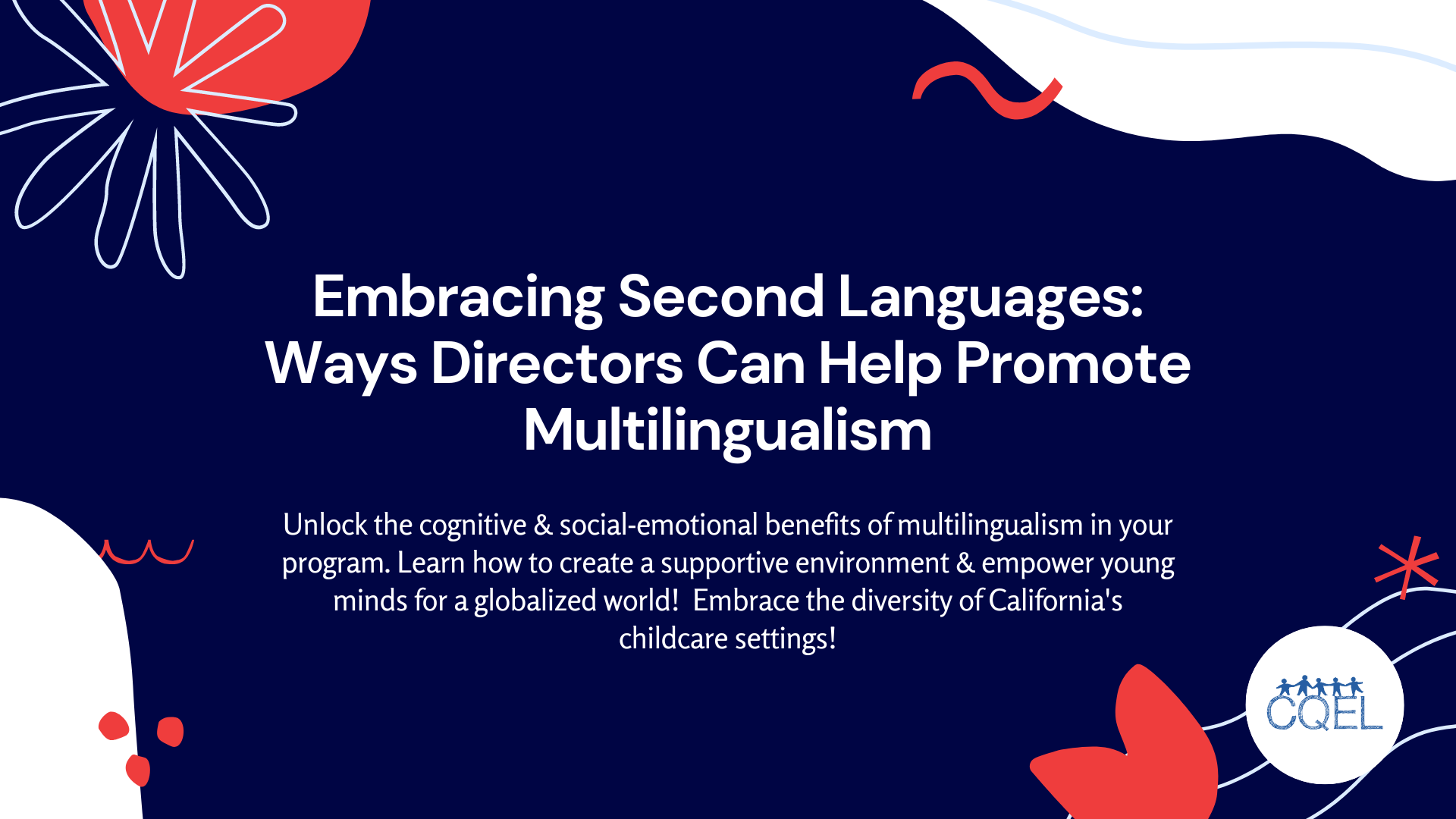Embracing Second Languages: Ways Directors Can Help Promote Multilingualism
Unlock the cognitive & social-emotional benefits of multilingualism in your program. Learn how to create a supportive environment & empower young minds for a globalized world! Embrace the diversity of California's childcare settings!

California childcare settings are becoming increasingly multilingual, reflecting the rich diversity of the state's population. These young learners, who may be acquiring English alongside their native language, possess a unique cognitive advantage. Research shows that multilingualism enhances executive function, memory, and problem-solving skills. The social and emotional benefits are equally compelling – multilingual children often demonstrate greater cultural awareness, empathy, and appreciation for diversity. In today's globalized world, fluency in multiple languages can also open doors to educational and economic opportunities. As a childcare center director, you have the power to create a supportive environment that fosters these advantages and celebrates the beauty of multilingualism.
The cognitive benefits of multilingualism are well documented. Studies show that juggling multiple languages strengthens the brain's executive function, the skills that allow us to plan, focus, and multitask. Multilingual children often exhibit superior memory and problem-solving abilities, demonstrating increased cognitive flexibility. Beyond cognitive benefits, multilingualism fosters social and emotional intelligence. Children exposed to different languages develop a deeper understanding of various cultures, leading to greater empathy and appreciation for diversity. These skills are essential for navigating our increasingly interconnected world. Finally, fluency in multiple languages is a valuable asset in today's job market. Multilingual individuals are in high demand across various sectors, giving them a significant advantage in their future careers.
So, how can you create a supportive environment for multilingual learners in your childcare center? Staff training is paramount. Invest in professional development opportunities that educate your childcare staff on the benefits of multilingualism and equip them with strategies for supporting second language learners. This might involve techniques for incorporating home languages into daily routines or scaffolding instruction to ensure all children can participate meaningfully.
A curriculum rich in diversity is another key element. Seek out materials and activities that celebrate different languages and cultures. Story time can be a wonderful opportunity to introduce children to books in various languages. Display artwork, music, and decorations that reflect the cultural backgrounds of the children in your care. This visual representation sends a powerful message – all languages and cultures are valued here.
Collaboration with families is crucial. Building strong relationships with parents allows you to gain valuable insights into their child's home language and cultural background. Work with families to incorporate aspects of their heritage into the childcare center's environment. This fosters a sense of belonging for children and demonstrates respect for their cultural identity. Consider exploring partnerships with community organizations that offer resources or programs related to multilingualism. These partnerships can enrich your curriculum and provide additional support for your staff and families.
As a director, you have several strategies at your disposal to promote multilingualism. Hiring bilingual staff members offers a significant advantage. Bilingual staff can serve as language models for children, supporting their development in both their native language and English. Consider implementing a dual language program, where instruction is delivered in two languages. Dual language programs offer a structured approach to second language learning and can benefit all children, regardless of their native language. Cultural celebrations are another powerful tool. Organize events that showcase the diverse cultures and languages represented in your childcare center. This fosters a sense of community and allows children to learn about and appreciate different traditions. Technology can also play a role – explore language learning apps or online resources that can supplement your curriculum and provide additional support for second language learners.
California offers a wealth of resources to support multilingualism in childcare settings. The California Department of Education provides information and guidance on dual language programs in early childhood education (https://www.cde.ca.gov/sp/cd/re/]). The Center for Applied Linguistics (CAL) also offers valuable resources and professional development opportunities related to language acquisition and multilingual education (https://www.cal.org/).
By creating a supportive environment for multilingualism, you empower children to reach their full potential. You nurture their cognitive abilities, foster cultural appreciation, and equip them with the skills they need to thrive in a globalized world. Embrace multilingualism not as a challenge but as a precious asset and a valuable learning experience for all children entrusted to your care.
